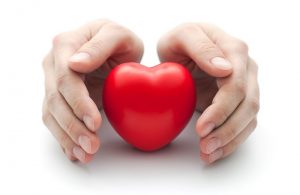
The 5 rules to protect you from street food damage
It will be no coincidence that the countries with widespread overweight are those with the highest presence of fast food and poor quality restaurants at every corner. Just walk around cities such as New York, London or Hamburg to realize the widespread spread of adipe and occasions to fill your belly with little spending. Hot dogs, hamburgers, doughnuts, wurstel, fries, sweets, ice cream, cappuccinos, sandwiches, chai milk, pizzas of all kinds have become an integral part of the urban furniture of the big cities and are located in the streets, malls, airports, essentially wherever there is sufficient flow of potential consumers.
This perennial invitation to eat or to take on calories makes it difficult to self-regulate your own food consumption. Additionally, in places of sale, you do not only consume food and drinks but also work meetings, writing hours, or emails that make it difficult to distinguish the act of eating from other useful activities.
In recent years, the barriers between work and private life, between leisure time and hours in the office, between leisure and work places, between meal times and fasting hours have finally been cut off. We are perpetually connected to each other through a network that is certainly useful to us, but too often we become slaves.
In this context, our eating habits have also changed. We have less time to buy and prepare for food, we eat less at home, and so we rely heavily on our nutrition for outsiders who, unwilling or nauseate, have more to heart their economic results than our health. And the economic results, in the vast majority of cases, are still gained today with the taste and not with the genuineness.

The food industry for decades knows very well the techniques for manipulating taste and indirectly consumption. The point you are pointing to is called a bliss point jargon, that is, that precise balance between sweet, salty and fat that induces maximum sensory pleasure. In the palate of the consumer this mixture of ingredients translates into a peak dopamine release, the neurotransmitter responsible for the feeling of pleasure and contentment. The desire for pleasure surpasses the power and depth of the appetite regulation mechanisms and inevitably leads us to eating too much and too often. The thousands of temptations we cross by walking on the road stimulate our pursuit of pleasure and not appetite.
In addition, in order to get the bliss point at the lowest cost possible and thus enjoy wider margins, industries use poor quality ingredients.
The junk food is closely connected with what is called street food, street food, eaten in a hurry from one step to another in increasingly crowded cities in the world. In the last period, as well, the growing trend of health is perceived, industries are also trying to seize the benefits of this trend. Sometimes they do it with good products. Others with inadequate foods in terms of ingredients but very well disguised as healthy foods.
This view is particularly insidious for the most fragile in terms of eating behavior, for children if not well run by parents and children.
But there are some simple rules that can help us reduce the risks of a new diet …
1) Organize your day around breakfast, lunch and dinner
It is very important not to skip these meals because it will become an excuse to legitimize eating when you’re around: “I skipped lunch but I’m hungry! Now I eat a sandwich,” is the typical reasoning. Give yourself enough time to the three main meals and you will see that you will have less need to eat when you’re around.
2) Take away snacks
Or, at the very least, decide in advance what the things you’ll be doing when you’re around. A spin is not like a sandwich, a coffee has little to do with a chai milk made for half of syrup. Always read or ask about the ingredients of the food you eat.
3) Try to attend healthier premises rather than generic
Because you will have a few more options to find something that is not bad. But keep in mind that even these are usually full of “trap” foods, advertised as healthy but in fact filled with unhealthy ingredients.
4) If you can, be in the open air and avoid the premises
A snack taken from home and eaten in a park is better than what you find in a bar and eating on a bench will thus become a chance to stay a few minutes in touch with nature.
5) If you decide to eat, stop
Because eating walking makes it easier to go beyond. Our nervous system does not perceive how physiological it is to take food as it moves, and therefore the movement makes the signs of satiation less precise. You may also like this site.



Average Rating